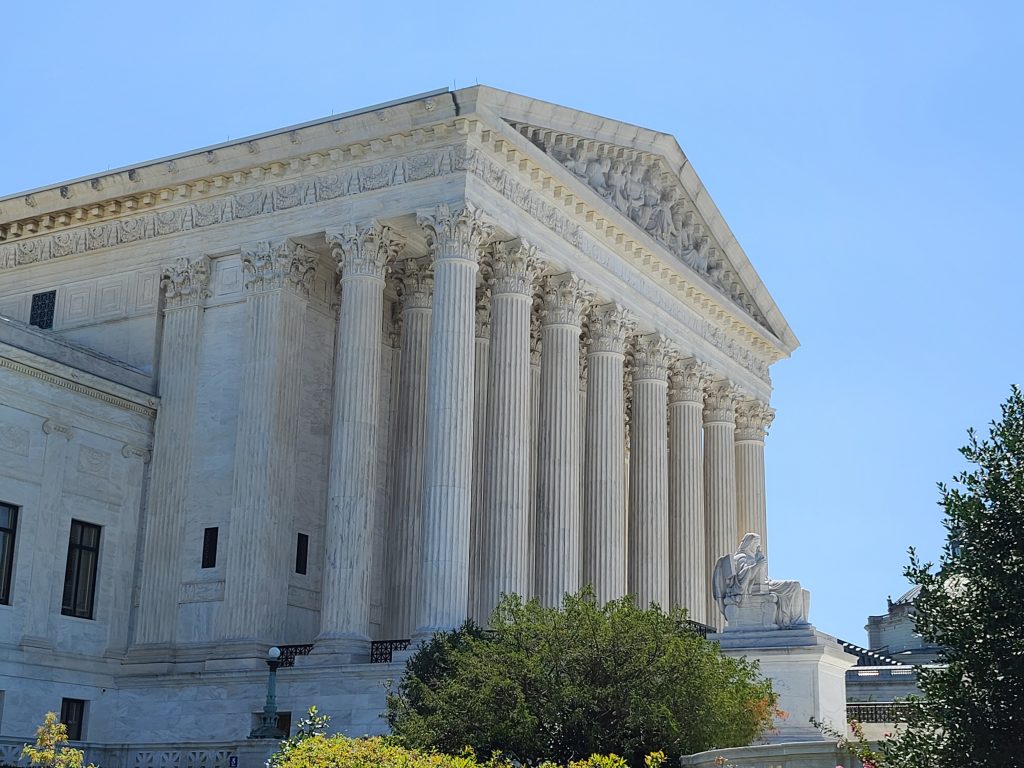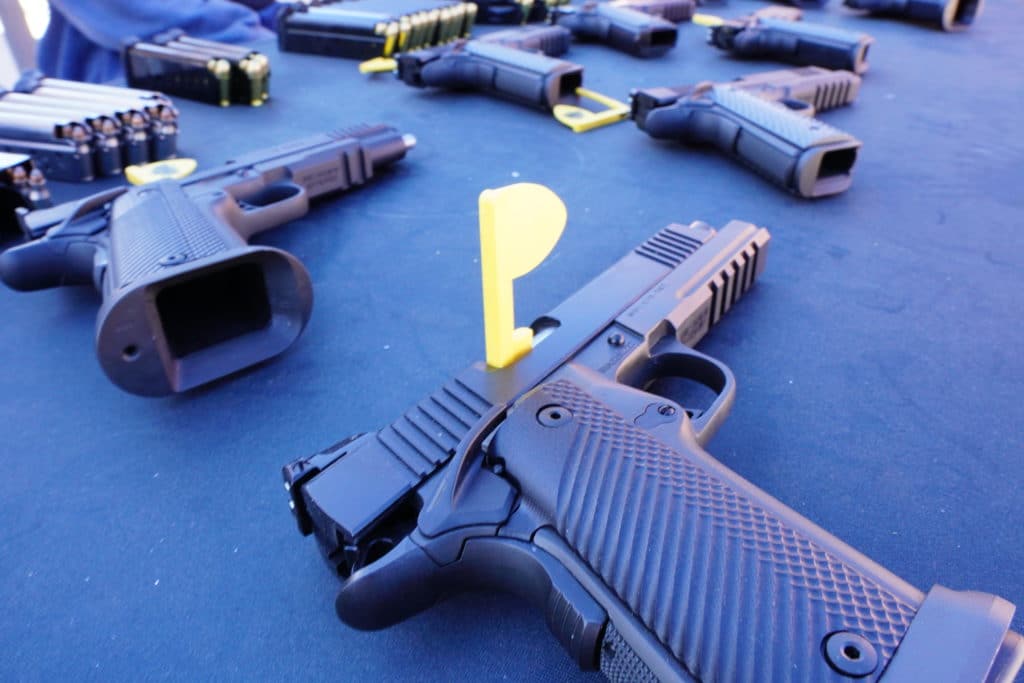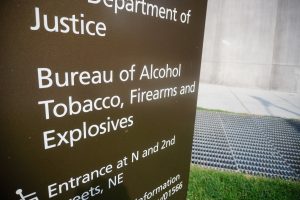We’re taking a close look at an emerging argument for how bans on popular firearms, like the AR-15, can possibly be banned under the Supreme Court’s Bruen standard. (And were doing it as I sit in my pitch-black living room using my phone’s hotspot and the last 29 percent of my battery thanks to crazy winds and poor Dominion Energy powerlines. But neither Mother Nature nor the incompetence of a utility will keep this newsletter from reaching your inbox on time!)
The Deleware “assault weapons” ban was upheld this week by a federal judge. That judge’s ruling laid out a framework for how a category of guns can be popular but not protected by the Second Amendment. It’s a framework we’ve seen once before, but one you should expect to see again.
Contributing Writer Jake Fogleman also uses California’s “Unsafe Handgun Act” as an example of why there is so much distrust between gun owners and gun-control advocates. After all, here is a law that is framed around protecting owners from low-quality guns that may not perform as advertised. But, instead, it has implemented impossible-to-meet standards that have wiped away the ability of Californians to buy new pistol models for the past decade.
Plus, Pepperdine University Professor Jake Charles joins the podcast to detail the wide impact Bruen has already had on how lower courts approach gun cases.

Analysis: A Legal Template for Upholding AR-15 Bans is Emerging [Member Exclusive]
By Stephen Gutowski
A federal judge upheld Delaware’s “assault weapons” ban this week using reasoning likely to resonate with other courts inclined to reach the same outcome.
On Monday, Federal District Judge Richard G. Andrews, an Obama appointee, found the state’s ban on AR-15s, AK-47s, and similar firearms–along with its ban on magazines that hold more than 17 rounds–is constitutional. He did so despite finding the guns were “in common” use for lawful purposes.
“[I] conclude that the prohibited LCMs, like the prohibited assault long guns, are in common use for self-defense and therefore ‘presumptively protect[ed]’ by the Second Amendment,” Judge Andrews ruled in Delaware State Sportsmen’s Association v. Delaware Department of Safety and Homeland Security.
That probably left a lot of people doing a double-take. But Judge Andrews came to his conclusion after arguing AR-15s and the like weren’t common during the founding era and represented a technological advancement that is responsible for a uniquely modern problem: mass shootings. Because of this, he argued Bruen allowed him to look for historical analogues that show a history of regulation instituted for the same purpose and using the same means.
He ruled there was such a tradition.
“I find that the LCM and assault long gun prohibitions of HB 450 and SS 1 for SB 6 are consistent with the Nation’s historical tradition of firearm regulation,” he wrote. “Plaintiffs have therefore failed to demonstrate a likelihood of success on the merits of their Second Amendment claim.”
He pointed to the proliferation of late 19th Century Bowie knife and Billy club bans, plus later machinegun bans, as evidence governments have previously banned the sale of weapons they believe are associated with especially dangerous criminal behavior. He further argued banning a subset of weapons was a relatively minor burden and one that was similar to his historical examples.
“[B]oth sets of regulations impose a ‘comparable burden,” he wrote. “Indeed, the burden that the challenged regulations impose is slight.”
Judge Andrews isn’t the only, or even the first, one to use this concept to save a ban. District Judge Karin Immergut, a Trump appointee, denied an attempt to block Oregon’s magazine limit under the same basic framework. While she went further and said she didn’t need to do a Bruen analysis at all because ammunition magazines aren’t protected by the plain text of the Second Amendment, she did the analysis anyway, and it came out along the same lines as Judge Andrews’ argument.
It’s likely other courts will adopt this framework as well.
Other courts, namely the Ninth and Fourth Circuits, have previously shown they don’t believe AR-15s or similar guns should be sold to civilians. The old two-step balancing test of the pre-Bruen era was explicitly about whether the argued public safety impact of banning the guns was enough to overcome the infringement on the right of Americans to have them. Any court that upheld an “assault weapons” ban before 2022 essentially said “yes.”
So, given the opportunity to review the law again, it’s fair to think they may want to find a way to reach the same conclusion. That’s especially true if the path to that answer appears to at least plausibly fit within the Supreme Court’s new test.
Of course, Judge Andrews’ reasoning has some serious flaws. For one, it seems to be making the same mistake in the eyes of the Court that the two-step test did: going one step too far.
Reading Heller, McDonald, and Bruen provides the impression that any class of firearms considered to be in “common use” for lawful purposes, such as self-defense, is inherently protected by the Second Amendment and can’t be banned by the government.
“The traditional militia was formed from a pool of men bringing arms ‘in common use at the time’ for lawful purposes like self-defense,” The Court wrote in Heller. “Indeed, that is precisely the way in which the Second Amendment’s operative clause furthers the purpose announced in its preface. We therefore read Miller to say only that the Second Amendment does not protect those weapons not typically possessed by law-abiding citizens for lawful purposes, such as short-barreled shotguns. That accords with the historical understanding of the scope of the right[…].”
That Judge Andrews finds AR-15s and the other banned guns in common use for the purpose of self-defense and then proceeds on to further analysis is unlikely to be what The Court had in mind. It seems relatively clear SCOTUS doesn’t believe it is possible to ban any gun that is in common use for lawful purposes. So, the detour into comparing modern “assault weapons” bans to 19th Century Bowie knife or Billy club bans will likely be unpersuasive should it ever make its way up to The High Court.
It also suffers from the lack of a limiting principle. Judge Andrews argues that the self-loading, semi-automatic technology found in AR-15s and the other banned guns didn’t become popular until after the Civil War. And their adoption led to the rise of mass shootings (never mind that semi-automatics were becoming common about 100 years before the onset of modern mass shootings).
But there’s nothing in Judge Andrews’ line of reasoning that wouldn’t prevent the same argument from being applied to all semi-automatic firearms or an ammunition magazine of essentially any size. That includes semi-automatic handguns, which the Supreme Court has already ruled can’t be banned.
Still, even if the prospects for success on appeal to the Supreme Court are dim for this argument upholding AR bans, it will likely proliferate in some of the most important circuits because it at least attempts to follow the Bruen steps while still maintaining the bans. And, even if the weaknesses are as serious as they appear, pointing them out will only matter if the Supreme Court actually takes up a case involving them. After all, the two-step test The Court excoriated in Bruen was the defacto review standard on gun cases for a decade because of SCOTUS inaction.
Whatever ends up happening, expect to see Judge Andrews’ legal reasoning pop up anytime a gun or magazine ban is upheld.
Podcast: Bruen is Outpacing the Effects of Heller (Feat. Pepperdine University’s Jake Charles) [Member Early Access]
By Stephen Gutowski
This week, we’re discussing the tremendous effect the Supreme Court’s Bruen decision has had on the lower courts in a few short months.
Jake Charles, an associate professor at Pepperdine University, joins the show to give us an overview of his latest paper. In it, he comprehensively breaks down how many Second Amendment claims have been successful thus far and which ones have performed best. With 31 successful claims, the post-Bruen era has seen far more decisions against gun laws than the immediate aftermath of 2008’s Heller decision.
Charles said he wasn’t surprised by how much of an effect Bruen has had, given the nature of the test it lays down. But he was surprised by the success rates of different challenges, though. While many carry restrictions have been struck down on a consistent basis, cases against unlawful uses of firearms or prohibited person prohibitions have seen little success.
We also discuss some of the critiques Charles has of the Bruen standard generally. He explains his view that the Court forstalling the use of anything but historical laws is too restrictive. And he argues the historical test is so far underbaked, which he claims has led to confusion among lower courts.
Charles responds to common pro-gun arguments that critics of Bruen are mostly upset with the standard because there simply weren’t many gun regulations at the founding, which limits what can be considered Constitutional today. And he explains why he believes the Court’s approach to analysis by analogue is not flexible enough to deal with modern problems the founders didn’t face.
Plus, Contributing Writer Jake Fogleman and I talk about a federal judge upholding Delaware’s “assault weapons” ban despite finding the guns are in “common use” for self-defense.
You can listen to the show on your favorite podcasting app or by clicking here. Video of the episode is available on our YouTube channel. Reload Members get access to the show on Sunday. Everyone else will be able to listen on Monday.
Come on the Podcast
One of the many perks of a Reload membership is the opportunity to appear on the podcast. We’ve had a lot of people on the show from all kinds of backgrounds. It’s one of my favorite segments since it gives us all a better insight into the community that makes this publication possible. If you want to come on the show, just reply to this email and let me know!

Analysis: California’s Microstamping Law Highlights Why Some Gun Owners Distrust New Laws [Member Exclusive]
By Jake Fogleman
California officials tipped their hand this week in announcing which of the state’s blocked handgun restrictions it intends to appeal. In doing so, it also emphasized why many gun owners greet calls for novel “gun safety” regulations with skepticism.
Earlier this month, a federal judge issued a preliminary injunction against significant portions of California’s “Unsafe Handgun Act.” He ruled that the law’s loaded chamber indicator (CLI), magazine disconnect mechanism (MDM), and microstamping requirements lacked compelling historical analogues and were thus unconstitutional.
At first, the decision was greeted with stayed reactions from the state’s typically boisterous gun-control-supporting elected officials, and the prospects of an appeal weren’t certain. Now, the state has officially filed its appeal but tellingly omitted a request for emergency relief on one of the central tenets of the so-called Unsafe Handgun Act.
California Attorney General Rob Bonta (D.) officially asked the Ninth Circuit to review the case. He specifically requested an emergency stay on the part of the decision that affects the requirement new handgun models be equipped with CLIs and MDMs. But he did not ask the court to reinstate the microstamping requirement.
Bonta’s acquiescence to the notion that the provision is likely beyond the pale for even the Ninth Circuit—which amassed a perfect 50-0 record in deciding gun cases in favor of the government before the Bruen decision—bodes well for gun-rights supporters in their legal fight against the law. But it also suggests that California officials suspect the microstamping law they’ve enforced for a decade can’t survive Second Amendment scrutiny. All the while, legal handgun options for California gun owners continued to slowly dry up as the rest of the country continued to use the latest makes and models safely.
Consider the law’s evolution from its inception in 2001. At first, it simply stated that all revolvers and pistols for sale in the state had to have a safety mechanism and pass a drop test to ensure the gun did not go off upon impact. The industry was able to comply with those requirements because, as a general rule, most modern handguns available today are manufactured to be drop-safe and contain some form of safety—either through an affirmative manual safety or more passive safety systems incorporated in a pistol’s trigger, for example.
Then, the state updated the law in 2007 to require that gun manufacturers include a CLI that indicates if the pistol is loaded in a highly-specific way and an MDM that prevents the gun from firing when the magazine is not inserted. The new requirements were certainly outliers in the gun market, but they were at least feasible for larger manufacturers to comply with. Indeed, by the state’s estimates, at least 32 handgun models on California’s handgun roster include the CLI and MDM features.
The 2007 update to the law also included the first reference to microstamping, a concept that would involve a gun’s firing pin imprinting a traceable serial number on the casing of every round fired from the weapon to ostensibly aid law enforcement in tracing crime guns. However, the state acknowledged the theoretical nature of the technology at the time, stipulating that microstamping would not be a required feature on handguns until it was officially declared “feasible.”
In 2013, then-Attorney General Kamala Harris (D.) declared that the technology had arrived. Since then, zero new handguns have been added to the roster because gunmakers have been unable to comply with the requirement citing the unworkable nature of the theoretical technology. Furthermore, popular pistol models that were previously grandfathered onto the roster have continuously been removed, creating a constant squeeze on the market for legal civilian handguns in the state.
Meanwhile, those same gun owners have been forced to watch as law enforcement officers (loosely defined) are free to purchase and use handguns deemed “unsafe” by the state. The state’s own expert law enforcement witness in Boland v. Bonta even testified they carried one of these supposedly “unsafe” firearms while on duty.
The situation has also created perverse incentives for some police officers in the state to use their afforded privilege to purchase and sell off-roster handguns to civilians at a premium, resulting in many well-documented legal scandals.
Each adjustment made to the law over the years continuously ratcheted down the options for legal gun owners to exercise their Supreme Court-affirmed right to own a handgun, to the point of functionally outlawing the sale of new pistol models for the past ten years.
And the feigned use of “safety” concerns to enact what are, in effect, just bans on nearly all modern handguns, it’s clear why some gun owners greet any attempt to impose new “gun safety” regulations with suspicions of ulterior motives. That the state of California knowingly enforced a law based on technology that isn’t, and has never been, implemented on any production gun anywhere in the world left many understandably jaded.
Now that the state has filed an emergency stay request that tacitly acknowledges the likelihood that microstamping won’t be upheld as a “safety” feature, it’s clear that those suspicions are not without some basis in reality.
That’s it for now.
I’ll talk to you all again soon.
Thanks,
Stephen Gutowski
Founder
The Reload







